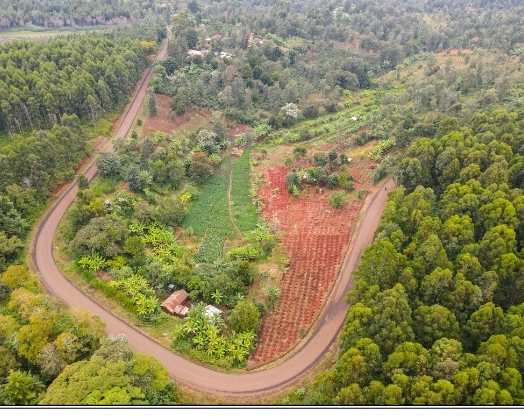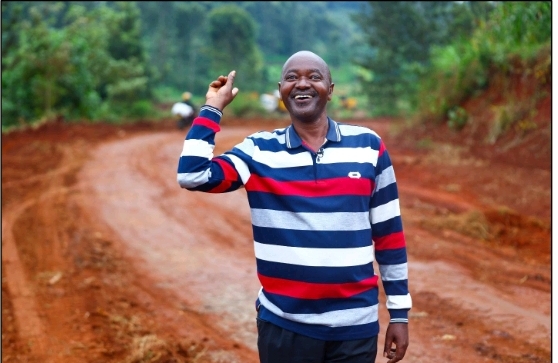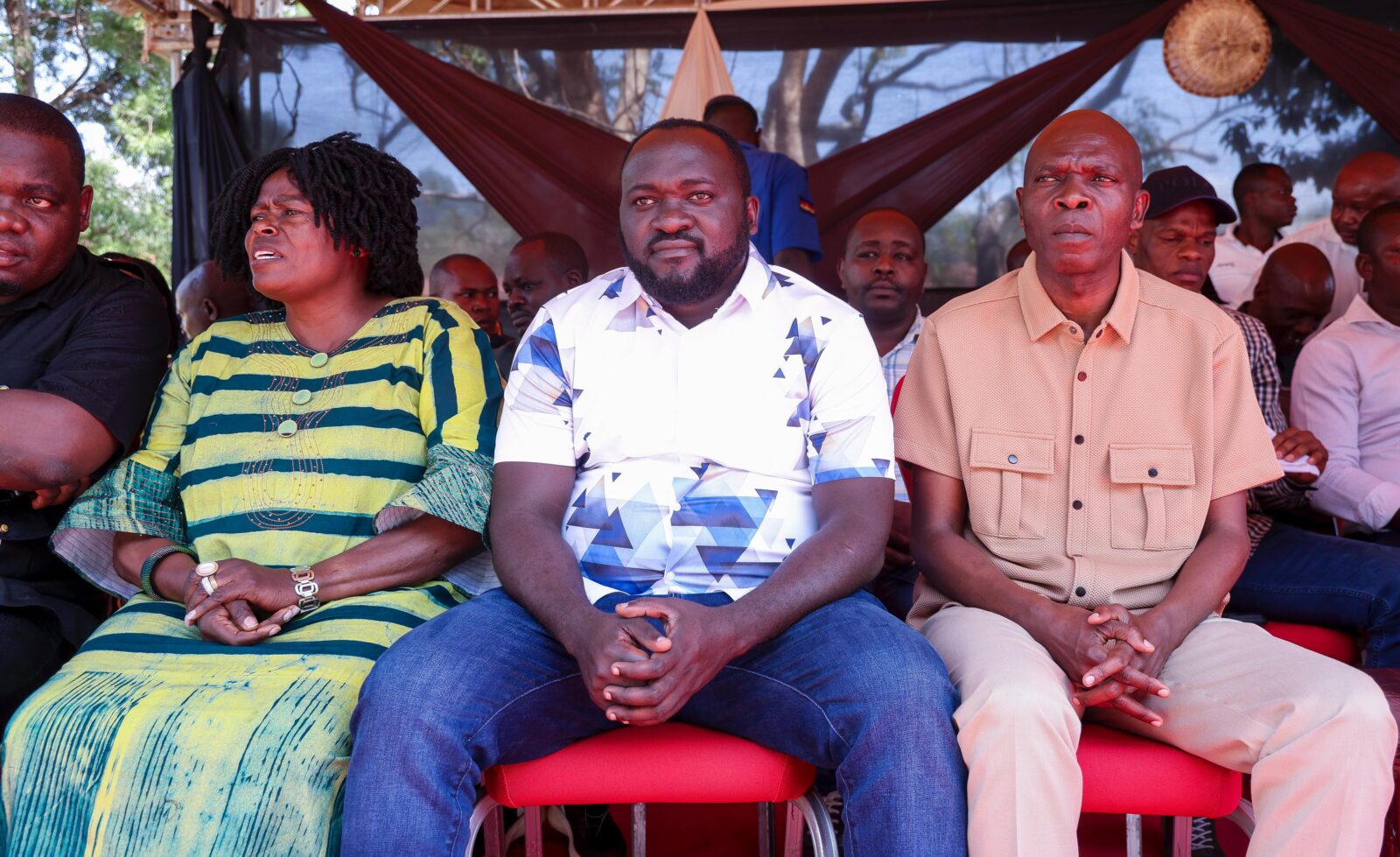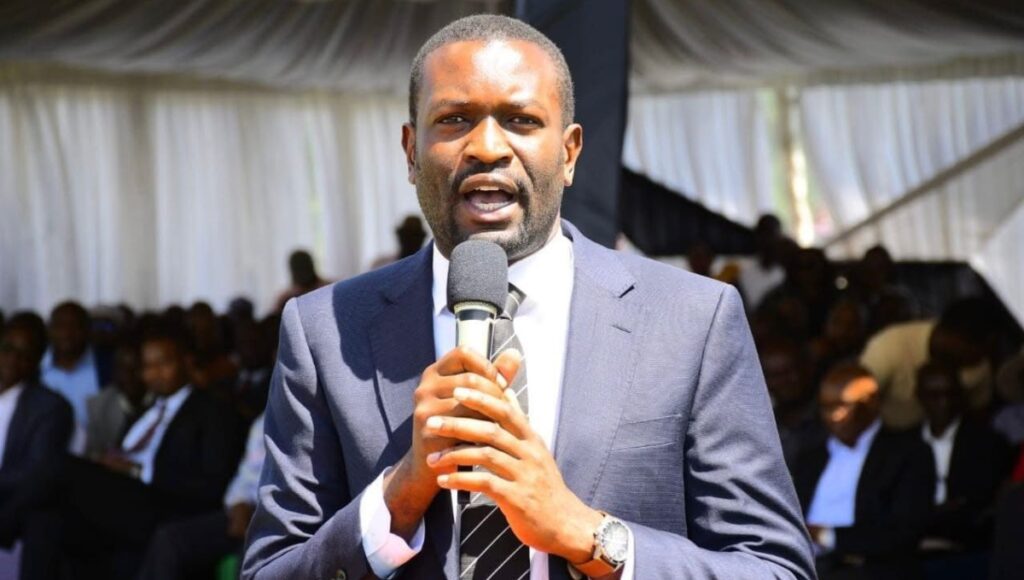A stalled road famously nicknamed ‘Mùcibi wa Gichugu’ in Kirinyaga County has finally been revived after five long years of dust, potholes, and dashed hopes.
Locals gave it the name ‘Mùcibi wa Gichugu’ as a playful Kikuyu reference to the belt-like stretch that touches every area within Gichugu in Kirinyaga County.
For years, the once-promising Njuki-ini–Mbiiri–Kiamutugu–Kabare road had been reduced to a rough, neglected path slowing down boda bodas, frustrating farmers, and giving school-going children dusty send-offs every morning.
But now, things are looking up.

“This road had stalled for five years” said Cyrus Njeru, a teacher in Gichugu, “ I am happy to see heavy machinery and the contractor back on site.”
“I have lived here for years, and this road is very important to us,” said Kenneth Njue, a resident of Njuki-ini. “We call it Mùcibi because this road touches every ward. When it stalled, we were thinking of taking our children to go see the tarmac on the lower side, but we are happy because our Njuki-ini has now seen the black color (tarmac).”
“The road is about 50 kilometers in total; it is a loop, which is why it is called Mùcibi, meaning a belt in Kikuyu. It is meandering, touching many parts of the county, because we planned it from the top of the mountain down to the bottom.” Engineer Jackson Magondo, Director General of the Kenya Rural Roads Authority (KeRRA), elaborated.
The Njuki-ini–Mbiiri–Kiamutugu–Kabare road belt in Kirinyaga County has remained stalled for approximately five years following the withdrawal of contractors due to non-payment.
With the recent government approval of the securitization financing model for stalled infrastructure projects, the renowned Mùcibi wa Gichugu road was among the first to witness the resumption of works, rekindling optimism among residents such as Mr. Kenneth Njue.

“I have been a resident of this Njuki-ini area for many years. This is where I have chosen to settle down. We believe it will open doors for development as it snakes through Kirinyaga County, and people will move more easily, and we just hope the works won’t stall again.” Njue said.
Njue explains that this road, being constructed, not only serves his area, but stretches from PIAI through Mbiiri, Kiamutugu, all the way to Kabare. Njue’s optimism reflects the wider sentiment across the region.
For communities here, a functional road is more than just infrastructure; it is a lifeline to markets, education, healthcare, and broader economic opportunities.

The Njuki-ini belt is among 580 pre-2022 stalled road projects that have resumed following the government’s decision to unlock Ksh. 175 billion in pending bills owed to contractors.
Securitization allowed the Kenya Roads Board to borrow against future collections from the Road Maintenance Levy Fund without increasing national debt.
Engineer Jackson Magondo, Director General of the KeRRA, emphasised the economic relief the road revival has brought.“When the project stalled, local income dried up,” said Eng. Magondo. “Now that it is back on, landowners are being compensated, local vendors are seeing better sales, and parents can afford school fees. It is not just a win for contractors, but for the mwananchi on the ground.”
KeRRA, which oversees the development and maintenance of rural road networks, had been burdened with Ksh. 50 billion in pending bills.That formed a significant chunk of the Ksh. 175 billion national backlog.
So far, according to the KeRRA DG, 40 per cent has been cleared, paving the way for contractors to resume work.While securitisation provided much-needed relief, the government is now seeking long-term solutions, including public-private partnerships (PPPs) and other innovative funding mechanisms.
He further affirmed that the government is thinking outside the box to prevent a repeat of financial bottlenecks faced previously.











